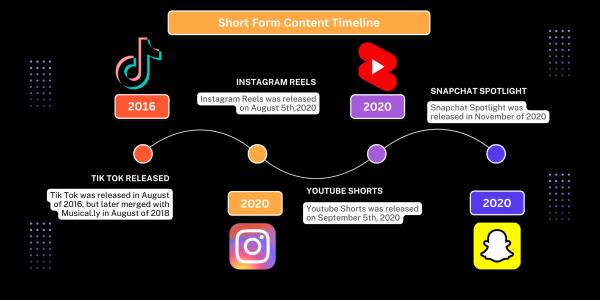A Subtweeting, Tea-Spilling Society
Twitter was created in 2006. That same year, the word “subtweet” was coined. The word is a blend of the words “subliminal” and “tweet,” and refers to a comment directed to a particular person without directly mentioning them, according to the Oxford Dictionary.
Since 2006, these types of posts have become increasingly popular on social media. Despite the origin of its name, subtweeting has evolved from solely taking place on Twitter to appearing on other social media platforms and even in person. This evolution has cultivated a society rooted in passive-aggressive communication.
Subtweeting at LHS
The Twitter feeds of LHS students vary depending on the person. Some may fill their feeds with politics, others with memes, and some with tweets from the latest pop stars. But most have one thing in common: they have subtweets.
Senior Marco Scopacasa, avid Twitter user and occasional subtweeter, verified this as true.
Scopacasa said that he only chooses to subtweet “when necessary” because “it’s funny” and “when someone talks crap about you, you have to put them in their place.”
Senior Micah Holzwarth mainly sees subtweets, such as the ones Scopacasa tweets, “after a breakup, if some people have beef or if something happened to them.” Subtweets between students at LHS tend to occur after drama within a friend group or following a breakup. They can range from hilarious comments to truly scathing roasts while all staying ambiguous about the subject of the tweet.
Another reason many subtweet, according to psychology teacher Ms. Kara Bosman, is to gain attention. This stands to reason. If something just happened or one feels strongly about it, wanting to garner attention from it is a natural step for many people.
“With subtweeting, you have a target audience that you indirectly call out, but there is a whole other audience that you gain attention from which is also what you want.”
This goal may not always be achieved, as senior Brilynn Dawson, upon seeing a subtweet, “usually just [reads] it and [continues] on with [her] search.”
However, others, like Scopacasa, become more invested in a subtweet. Scopacasa usually “[hits] it with a like and [checks] the comments to see if there’s a brawl going on.” Beyond that, on certain occasions, Scopacasa will go so far as to “do some investigating like check out some profiles [to figure out who the subtweet is about].”
Although most subtweets are viewed on Twitter, Dawson sees them on Instagram and Snapchat stories as well. On Snapchat, subtweets can be characterized as “sarcastic, funny, and straight-up roasts [that] usually end with really weird or funny hashtags.”
Whatever platform is used, there is always a sense of mystery as to who the post is directed to, leaving many as unknowing victims, whether meant in good fun or with malicious intent.
Societal Impact
For some, subtweeting can be a viable way to express feelings. Subtweets don’t always come off as mean, and the purpose behind them might be as a way to vent about someone or call them out. Often times, subtweets can serve as a source of comedy for those who read them. “It’s just funny and it can get hyped up,” Scopacasa described as a benefit to subtweeting.
Despite this, there is a popular belief that the phenomena of subtweets is indicative of a much larger occurrence in our current society — the inability for individuals to communicate directly between each other.
The ability to have an open, free dialogue, even when it might not be the most comfortable, is an integral part of communicating with others. It is widely believed that by subtweeting or otherwise indirectly expressing (usually negative) feelings about someone, people are not as obliged to think about the feelings of the person they are indirectly talking to.
“Society as a whole will become more willing to bury their emotions [without direct confrontation] because we don’t like being uncomfortable and don’t practice it very often,” Ms. Bosman expressed.
The desire to subtweet is rooted in a need to express feelings about other people and how they impact us. And though any method of catharsis can help to clear the mind and make one feel better about who or what is upsetting them, it can also hurt those who the subtweets are directed at. As AP Macroeconomics teacher and former sociology teacher Mr. Brian Voss explained, “on one side [of subtweeting], yes, you unload your frustrations, but on the other side, you are doing it at someone else’s cost.”
Subtweeting does not only have the potential to hurt the person it is directed at but also can hurt the person doing it. “You lose the ability to connect as people, to have that dialogue. I think that’s the scary thing. It’s so easy for us to go on social media and say something that we either, for fear of repercussion or just our thoughts, that we lose the ability to be human.” Mr. Voss said.
By choosing less direct methods of communication, many members of society choose to put aside the option of having an authentic, productive conversation in favor of blocking themselves off. Not only do people do this, but some also open themselves up for others to form negative opinions of them because of this behavior.
According to research conducted in 2016 by Autumn Edwards, a professor at Western Michigan University, and Christina Harris, her graduate student, subtweets are perceived negatively and “lead to unfavorable impressions of the source.”
These findings were reinforced by senior Hayley Holson, a regular Twitter user, who believes that “subtweeting has a negative connotation.” However, this study also revealed that the only tweet viewed worse than a subtweet is a directly unfavorable call-out. These call-outs are becoming rarer as people tend to choose the passive-aggressive alternative of a subtweet rather than direct confrontation.
“I don’t really solve problems on Twitter. I feel like that’s kind of immature,” Holzwarth discussed when asked if subtweets were a valuable way to solve problems. Ms. Bosman believes that “being passive aggressive is easier than confronting someone directly because people are afraid of showing true emotion and saying, ‘you hurt me.’ It’s easier to be upset instead of hurt. Being passive aggressive allows us to put up walls instead of being vulnerable. In a way, we believe we’re hurting people the way they hurt us.”
An alternative to a passive-aggressive altercation is talking out problems in person. Many people, including Dawson, prefer this: “I love confrontation,” she expressed.
This makes sense to some. Confrontation not only allows for a wider range of emotion but also, “It’s easier because you get to see their facial expressions and hear their tone. It’s so different when you’re online. Just to be in person and have that face-to-face interaction is much preferable,” Dawson added.
In addition, confrontation reminds people that the person they’re upset with, like themselves, is only human. Everyone can feel upset, sad, angry, and experience a full range of emotions. It can be hard to remember that when typing up a subtweet about someone, especially when the tweeter never has to see the immediate reaction of the person they are calling out.
But, by having an open dialogue with someone about what they’ve done to cause a problem, people are, in a way, forced to remember that words hold power. While typing up a 240-character subtweet might not seem like such a big deal, having to talk about those feelings face to face may make people put more consideration into how they really feel and want to go about expressing it.






